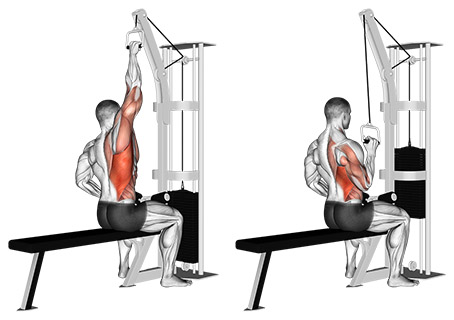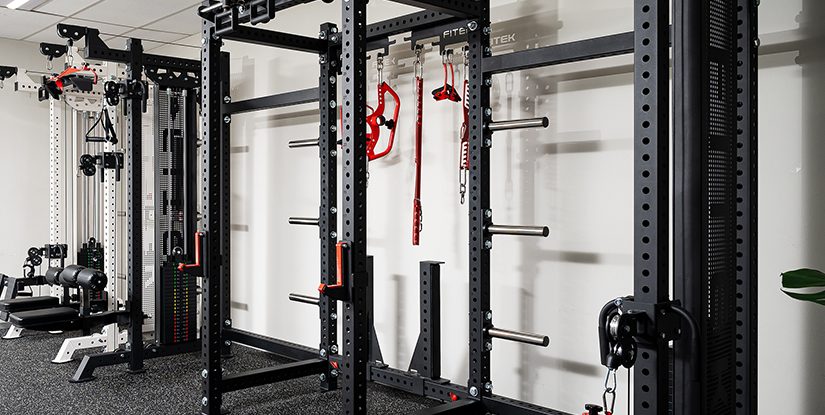I got bored using the same old best bar for lat pulldowns—the basic curved wide one everyone grabs. At first, it worked fine, no doubt. But after a while, progress kinda stalled, and I started wondering—am I missing out on something better? So, I decided to mix it up and test other pulldown handles at my gym to see what really gives the best lat gains.
The Bars I Tried and What Actually Worked for Lat Growth
So yeah, I basically messed around with a bunch of pulldown bars at my gym to see which ones actually hit the lats the hardest. Anyway, here’s a quick table to break it down so you can spot the differences at a glance.
| Bar Type | Grip Style | Lat Focus | Other Muscle Hits | Notes |
|---|---|---|---|---|
| Wide Grip Curved Bar | Wide, curved | Good stretch, less mid-back | Shoulders, traps | Classic, but limited mid-back |
| Close Neutral V-Bar | Narrow, neutral | More thickness, mid-back | Biceps, forearms | Great for building density |
| Straight Bar | Shoulder-width | Arms over lats | Biceps, forearms | Felt more arm pump, less lat |
| MAG-Style Bars | Medium-wide, angled | Best lat stretch + control | Mid and lower lats | Game changer for control |
| Single-Arm Attachments | One arm at a time | Fixes imbalances | Isolation work | Awkward but super helpful |
Wide Grip Curved Bar
So, this is the one everyone’s used to—the wide, bowed bar. It’s solid for getting a decent stretch, but honestly, I didn’t feel much mid-back action with it. It works, but it felt kinda limited after a while.
Close Neutral Grip V-Bar
Switching to a close neutral grip V-bar was eye-opening. This one hits your lats more from the thickness side, and I could really feel it packing my mid-back better than the wide bar. It’s also easier on the shoulders.
Straight Bar
The straight bar was an interesting one. I mostly felt it in my arms and forearms rather than my lats. So, if you’re after arm pump, cool, but for lat growth, it’s not my top pick.
MAG-Style Bars
These bars are designed for more natural wrist angles and, man, they really changed the game. I got way better stretch and control on my lats, especially the mid and lower parts. This one definitely gave me the best overall lat engagement.
Single-Arm Attachments
Initially, single-arm pulldowns felt kinda funky and off, but afterwards they totally helped even things out and let me dial in each side on its own. Definitely a tool worth using if one side lags behind.

What Actually Worked for My Lat Growth
Honestly, the close neutral grip V-bar was my go-to for building serious thickness in the lats. It just felt like it hit the muscle better and let me pack on some density.
But the real winner was the medium-wide MAG-style bar. The stretch and control I got with this bar were next-level. It let me hit my lats hard without messing up my wrists or shoulders.
Also, I stopped obsessing about pulling super wide. Going too wide felt less effective and kinda uncomfortable. Instead, I use a mix: MAG bars or V-bars for hypertrophy days when I want a serious pump, and sometimes the wide bar for activation and warming up.
So yeah, switching up your pulldown bars can make a big difference. Don’t just stick to the classic wide bar — try these variations to find what works best for your lats.
Why I Don’t Stick to Just One
Here’s how I personally rotate through different lat pulldown handles—it’s not rocket science, but it seriously helped my gains and kept my joints happy.
Why I Switch It Up Every 4–6 Weeks
Straight up, I change pulldown bars about every month or so. Usually every 4–6 weeks, depending on how things feel. Why? Because after a while, the same grip just stops hitting as hard. My muscles get used to it, and progress slows.
Swapping handles keeps my lats guessing and makes me adjust my form slightly, which keeps things fresh. Plus, it helps me avoid nagging joint issues.
What I Use on Volume Days vs. Strength Days
Here’s my general rule:
- Volume days (higher reps): I go for MAG-style bars or the neutral grip V-bar. These feel smooth, let me really squeeze the lats, and keep tension constant. More control, less cheating.
- Strength days (lower reps): I’ll use the wide curved bar or even a straight bar sometimes, just to move heavier weight. Not as clean of a contraction, but better for loading up.
If I’m feeling beat up, I’ll switch in some single-arm work to take pressure off and really isolate each lat.
How I Avoid Overuse Pain
Elbows and shoulders can start barking if you stick with the same setup too long. Been there. What’s helped me:
- Rotate bars/grips often
- Don’t max out every set
- Warm up with light lat activation first
- Keep my ego out of it — control > weight
Seriously, just tweaking the grip angle or switching bars every few weeks made a huge difference for my joints. Keeps me in the game and making gains.At the end of the day, chasing width means rotating the best bars for lat pulldowns—not just sticking with one. In a solid commercial gym, you’ve got options, so use ’em.
FAQs about Best Bar for Lat Pulldowns
The best bar for lat pulldowns depends on your goals and the muscles you want to target. For overall back development, a straight bar is commonly used. This bar works well for wider grip lat pulldowns, engaging the upper back and outer lats. For a more concentrated lower lat workout, a V-bar or narrow grip bar is a great option. This bar helps bring your elbows in closer, focusing on the mid-back area. If you’re looking for versatility, a multi-grip bar could be the right choice. It allows you to switch between different hand positions, offering variety for your workouts. It’s essential to choose a bar that feels comfortable and stable for your movements. For commercial gym use, the best bar for lat pulldowns should be durable, providing a secure grip while offering the flexibility needed for different exercises.
The most effective type of lat pulldown depends on the specific goals of your workout. For building overall back width and developing the outer lats, the wide-grip lat pulldown is a strong choice. It targets the upper part of your back and increases muscle engagement as your arms extend outward. A narrow-grip lat pulldown focuses more on the lower lats and is great for adding thickness to the mid-back. If you’re aiming to target the full range of your lats, combining both wide and narrow grips during your workouts can help achieve balanced development. The best bar for lat pulldowns plays a significant role here. A bar that allows you to change grips easily will help you target different areas and enhance muscle activation. By using different lat pulldown variations, you can ensure better overall back development.
Yes, the V-bar is an excellent choice for lat pulldowns. It offers a unique design that helps target the middle and lower portions of your lats. When using the V-bar, your hands are closer together, which brings the elbows in, helping to isolate the back muscles more effectively. This grip also reduces strain on the shoulders, making it a safer alternative for those who have shoulder issues or discomfort with wider grips. The V-bar also works the rear deltoids and traps, providing a well-rounded upper back workout. For commercial gym settings, having a V-bar as an option is beneficial because it allows users to vary their grip positions. This variety can help prevent muscle imbalances and improve muscle definition. The best bar for lat pulldowns should offer different attachments like the V-bar, giving users the flexibility to change up their routine.
The width of the lat pulldown bar is important for targeting specific parts of your back. A wider bar, typically around shoulder-width or wider, helps emphasize the outer lats, creating the desired V-shaped appearance. This wider grip allows for a greater range of motion, engaging the upper back muscles more effectively. However, the width should still feel comfortable and allow full extension of the arms without straining the shoulders. For those seeking a more balanced back workout, adjusting the width of the bar during different exercises can help activate different parts of the lats. Narrower bars focus more on the mid-back and lower lats, building thickness. The best bar for lat pulldowns will allow users to adjust the grip width to fit their specific training goals. For commercial gyms, offering a range of bars with varying widths ensures that all users can benefit from a tailored workout.

Hi, I’m the editor here at Leadman Fitness. We’re a manufacturer focused on producing top-quality barbells, plates, kettlebells, dumbbells, and strength training gear. I’ve been into sports and fitness for years, and I know my way around all kinds of gym equipment—both from using it and helping create it.
I spend a lot of time understanding the real problems people run into in the gym—whether it’s beginners trying to pick the right gear or experienced lifters looking for something more durable. I stay in close touch with our production team and talk directly with other equipment makers, so we’re always improving based on what real lifters and coaches are looking for.
What I share comes from hands-on experience—stuff that actually helps people train better, not just in theory, but in real gyms.
